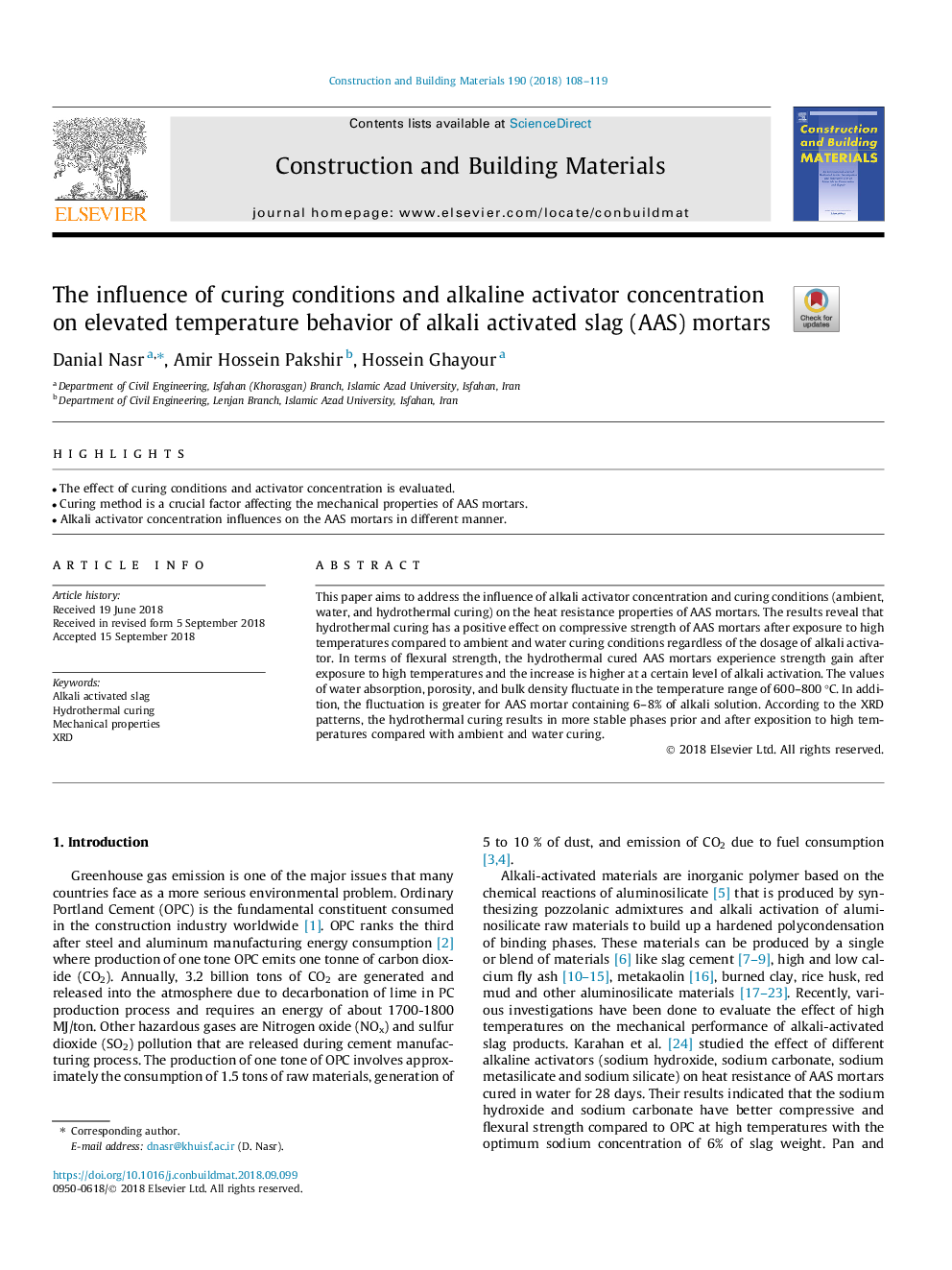| Article ID | Journal | Published Year | Pages | File Type |
|---|---|---|---|---|
| 10225315 | Construction and Building Materials | 2018 | 12 Pages |
Abstract
This paper aims to address the influence of alkali activator concentration and curing conditions (ambient, water, and hydrothermal curing) on the heat resistance properties of AAS mortars. The results reveal that hydrothermal curing has a positive effect on compressive strength of AAS mortars after exposure to high temperatures compared to ambient and water curing conditions regardless of the dosage of alkali activator. In terms of flexural strength, the hydrothermal cured AAS mortars experience strength gain after exposure to high temperatures and the increase is higher at a certain level of alkali activation. The values of water absorption, porosity, and bulk density fluctuate in the temperature range of 600-800â¯Â°C. In addition, the fluctuation is greater for AAS mortar containing 6-8% of alkali solution. According to the XRD patterns, the hydrothermal curing results in more stable phases prior and after exposition to high temperatures compared with ambient and water curing.
Related Topics
Physical Sciences and Engineering
Engineering
Civil and Structural Engineering
Authors
Danial Nasr, Amir Hossein Pakshir, Hossein Ghayour,
